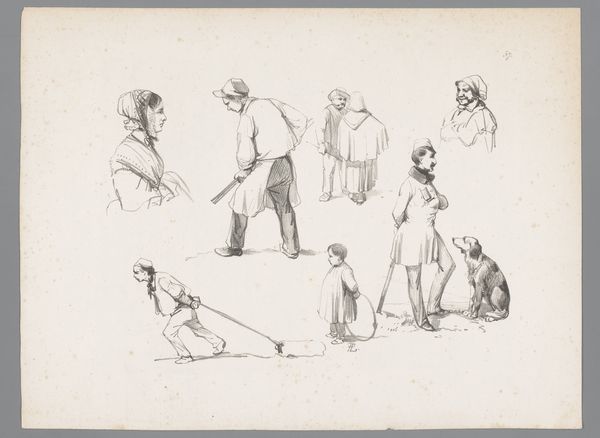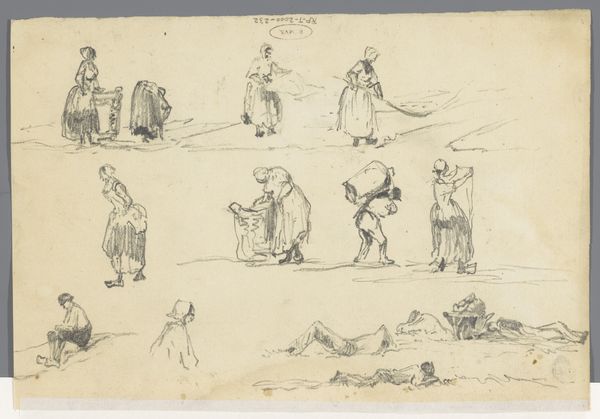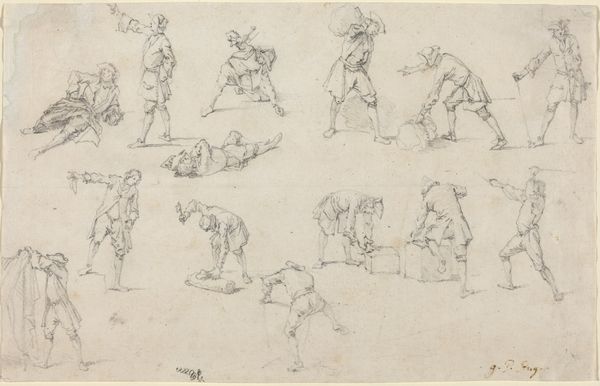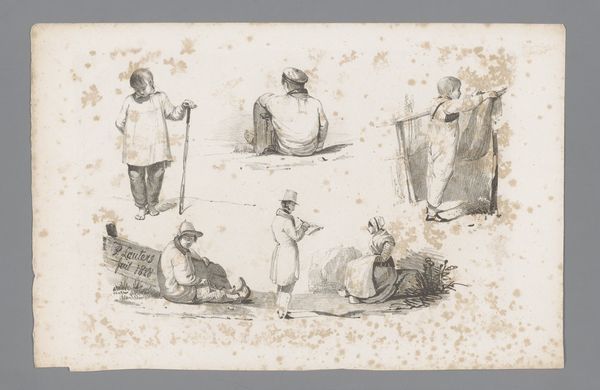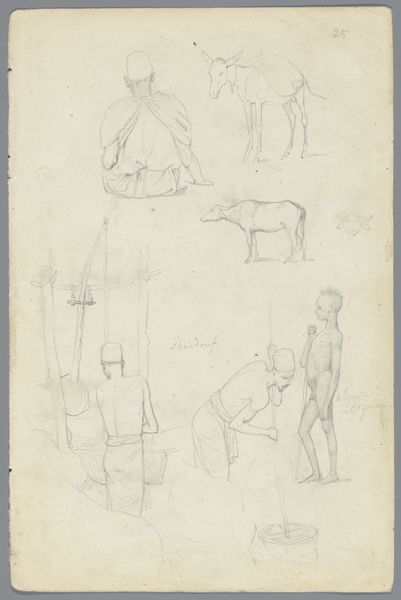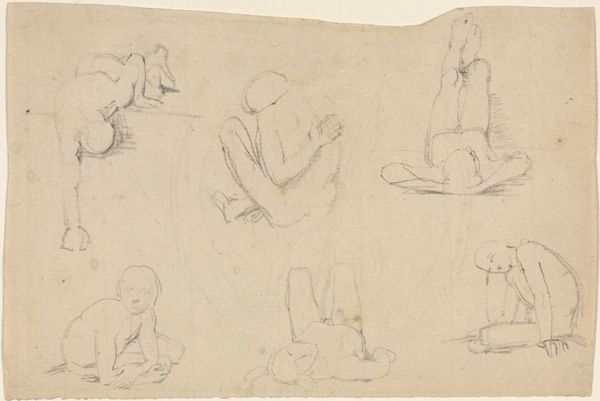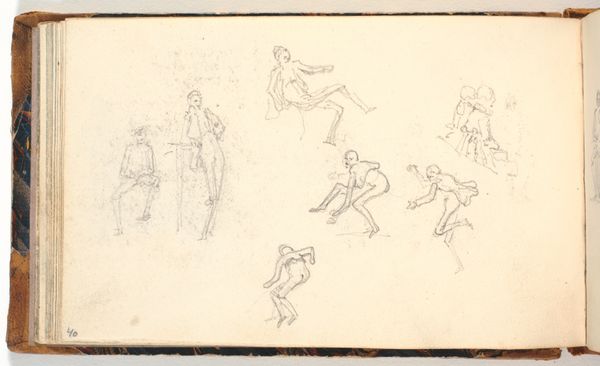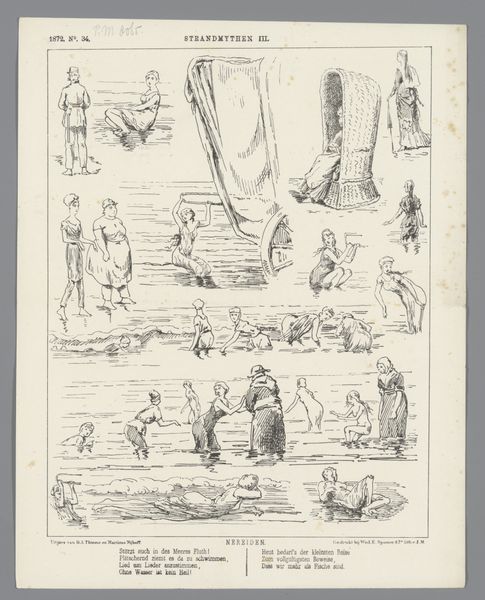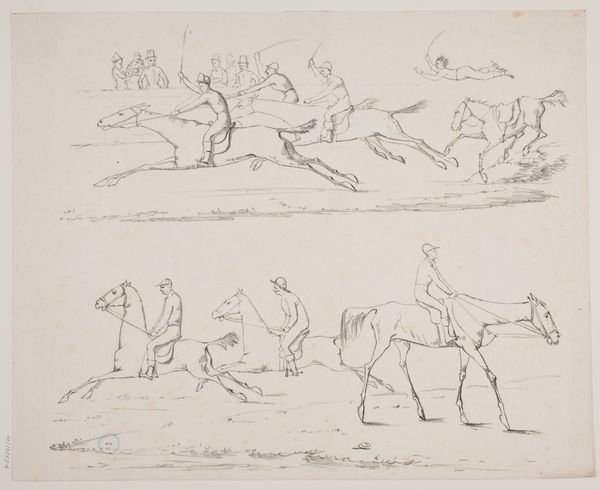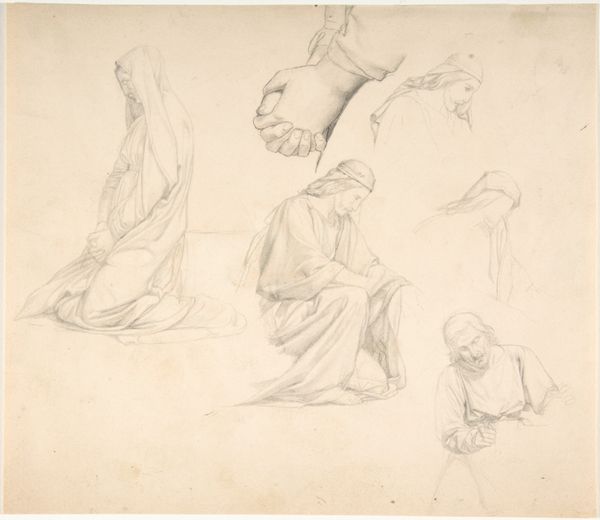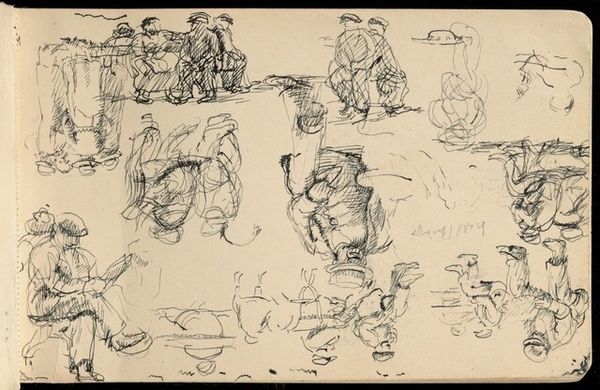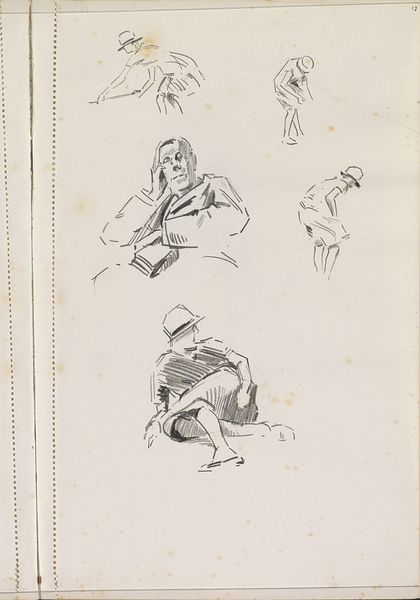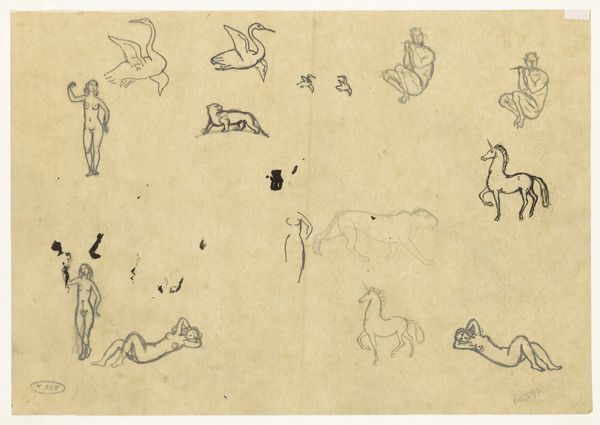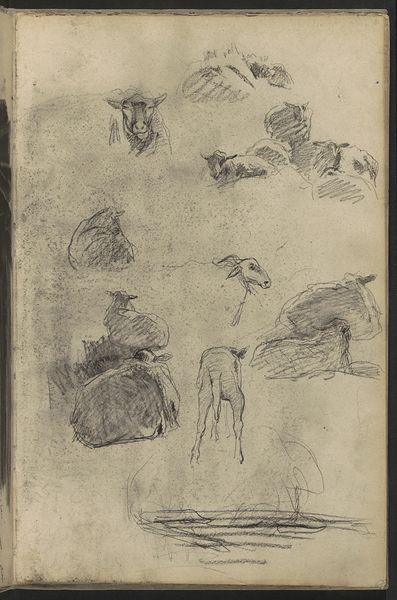
Syv detailstudier samt to studier til maleriet: "Vaskekoner ved Bondedammen i Hellebæk". 3. august 1838 1838
0:00
0:00
drawing, pencil
#
drawing
#
landscape
#
pencil
#
genre-painting
Dimensions: 346 mm (height) x 482 mm (width) (bladmaal)
Editor: Here we have P.C. Skovgaard's pencil drawing from 1838, titled "Seven studies and two studies for the painting: 'Washerwomen at Bondedammen in Hellebæk'." It has a sketch-like quality that really emphasizes the working lives of these women. What do you see in this piece? Curator: Well, immediately, I’m drawn to the stark portrayal of labor. Note the emphasis on process; Skovgaard isn’t presenting us with a romanticized vision, but rather studies focusing on the physical act of laundry. What's compelling is how the "high art" of painting is intimately linked to this "low art" form, which is actually a grueling necessity. Consider the physicality required – bending, lifting, scrubbing. What kind of class barriers are at work here, literally making the labour disappear into clean linen? Editor: So you're suggesting that this piece challenges traditional art boundaries by shining a light on everyday work? Curator: Precisely! It prompts us to think about materiality, about what “clean” even means. The labor becomes invisible as soon as it yields that ‘cleanliness’ in textiles or laundry. The artist presents a narrative not about leisure but a clear emphasis on how goods become available, or rather on the making-of, through the washerwomen’s movements as the engine. What I find especially fascinating is the potential subversion implied here. Skovgaard brings forward a material awareness – this labour becomes front and center. It forces an uneasy alliance. Editor: That’s really insightful. I hadn't considered how much the image prompts you to consider consumption of these textiles, versus focusing only on the picturesque landscape element of washerwomen. Curator: Yes, it urges a reassessment. It isn't just about aesthetics or landscape. What emerges, starkly rendered by the drawing, is this quiet record of labor, embedded within the artwork itself. It shifts our focus. Editor: I'm walking away understanding more clearly the way that process and materials are critical lenses to examining what stories a work can tell. Curator: Indeed, viewing art in this manner lets us reconsider the value we place on things that have involved labor and the hidden efforts it entails, and how they shape culture as well.
Comments
No comments
Be the first to comment and join the conversation on the ultimate creative platform.
